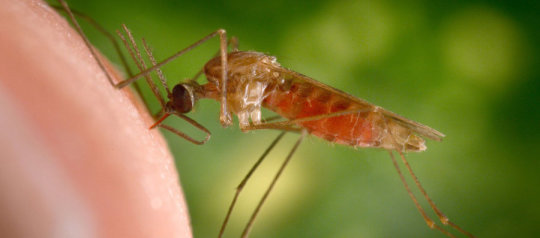[ad_1]
For the first time, scientists have read the whole genetic code of one single tiny mosquito. Traditionally, it has been difficult to extract enough DNA from insects and other small organisms to build a high quality genome for a single individual. Scientists from the Wellcome Sanger Institute and Pacific Biosciences worked in partnership to advance technology and lower the starting amount of DNA needed to just ‘half a mosquito-worth’, producing the first high quality whole genome of a single mosquito.
The results, reported in Genes open the door to understanding the true genetic diversity of insects and other arthropods, which comprise the most diverse animal group in the tree of life.
In 2018, collaborating organisations around the world officially launched the Earth BioGenome Project*, a global mission to sequence all 1.5 million known species of animals, plants, protozoa and fungi on Earth. The Earth BioGenome Project will ultimately create a new foundation for biology to drive solutions for preserving biodiversity and sustaining human societies.
When studying the biology of a species, the genome of a single individual can be used as a reference to explore the genetic differences attributing to varying susceptibility to disease, fitness and adaptation within others of the same species.
However, it is much easier to extract DNA and sequence the genome of some species over others. In particular, it has not been possible to assemble the genome from single small organisms such as insects using current sequencing technology. This leaves the genetic codes of individual insects and other similar-sized species inaccessible.
Until now, scientists have had to pool the DNA of multiple individuals of the same species, or inbreed them to produce genetically related individuals, in order to gather enough DNA to build a genome. This creates challenges when putting the genetic sequence back together again after it has been sequenced, as it can be difficult to know which genetic fragment came from which individual, resulting in genome sequences full of gaps and errors.
In the new study, Sanger Institute researchers worked with scientists at the sequencing technology provider, Pacific Biosciences (PacBio) to produce the first high-quality genome from a single insect using new technology that reduces the starting DNA needed.
Dr Mara Lawniczak, co-lead author from the Wellcome Sanger Institute, said: “This advancement in sequencing technology is vital to decoding the genomes of a huge number of species in the tree of life, giving us greater power to completely understand genetic diversity within even the tiniest species.”
Sanger scientists extracted DNA from a single Anopheles coluzzii mosquito and sent it to PacBio in the United States.
To reduce the amount of starting DNA required for genome sequencing, the PacBio team tweaked the preparation chemistry for genomic sequencing. They removed two steps from the process that result in the loss of DNA: shearing — cutting the DNA fragments into certain size ranges, and size selection — removing the unwanted small fragments.
The team were able to generate a high quality genome from just 100 nanograms of DNA — about half a mosquito’s worth — which is over an order of magnitude less than the 5 micrograms of DNA previously required.
The resulting genome was quick to assemble, complete and accurate. As a result of the complete genomic picture, nearly half of the previously unplaced DNA fragments for this mosquito species could now be placed within the correct chromosomal context.
Dr Jonas Korlach, Chief Scientific Officer at Pacific Biosciences and co-lead author of the study, said: “This has been a real team effort and we’ve thoroughly enjoyed the collaboration in developing this protocol. It’s a great example of the significant advances we can bring to the scientific community when academia and industry work together.”
This advance could have positive potential for humans as well, for example in the future it could be possible to assemble the whole genetic code of a patient’s cancer, from a single biopsy.
Dr Peter Campbell from the Wellcome Sanger Institute, who was not involved in the study, said: “The sequencing technology also shows promise for reading the whole genetic code of an individual patient’s cancer biopsy. 100 nanograms of DNA collected with a needle prick could be enough to give a detailed view of the cancer’s genetics and inform targeted therapies for that specific patient.”
[ad_2]















